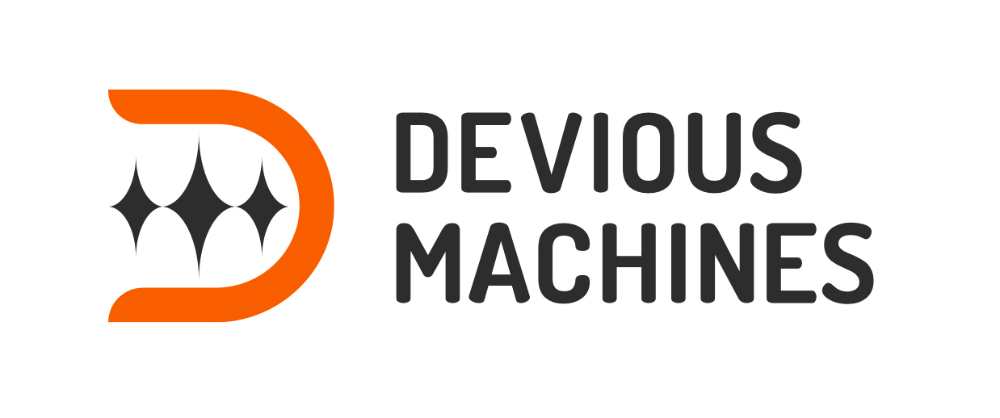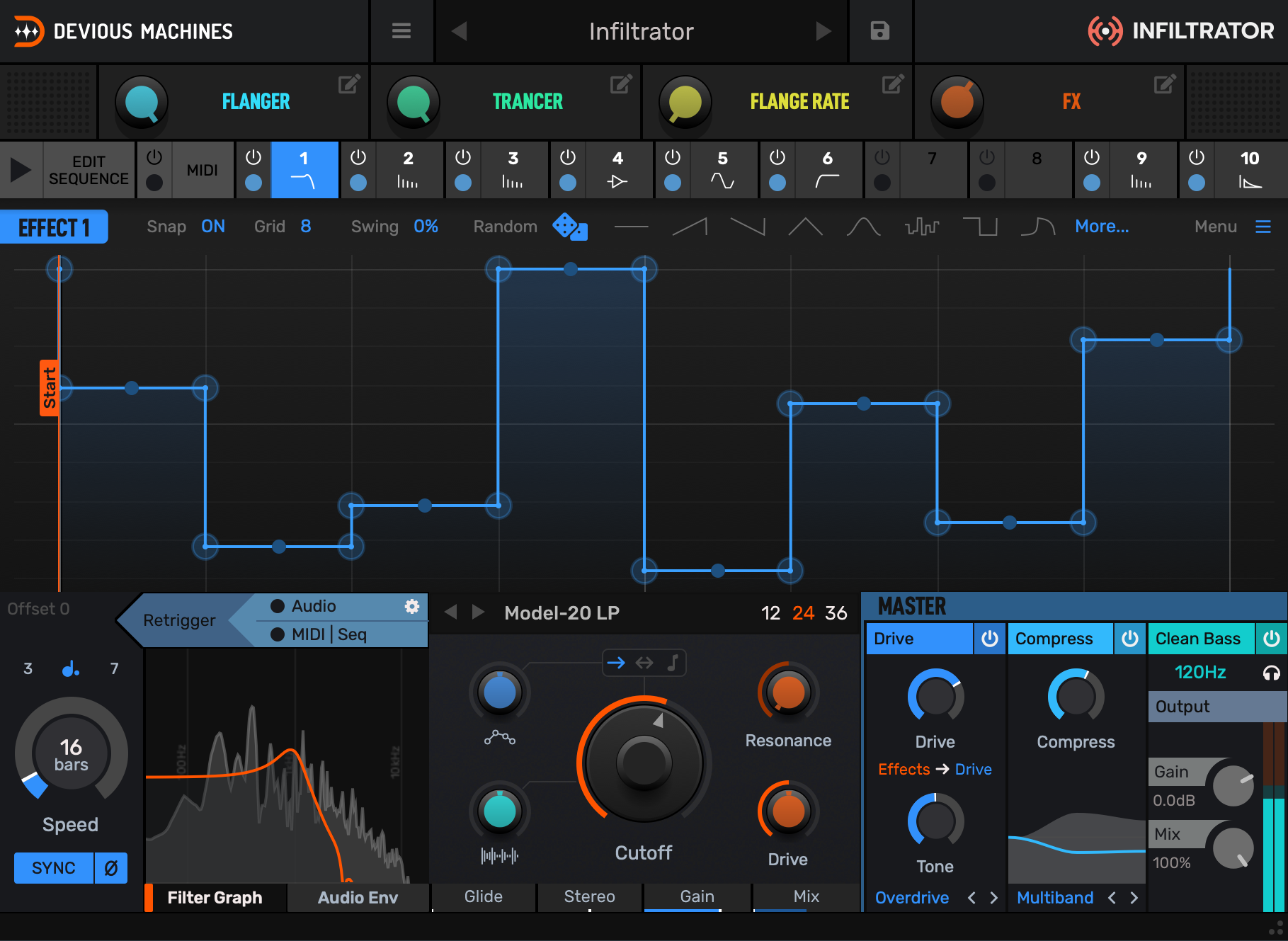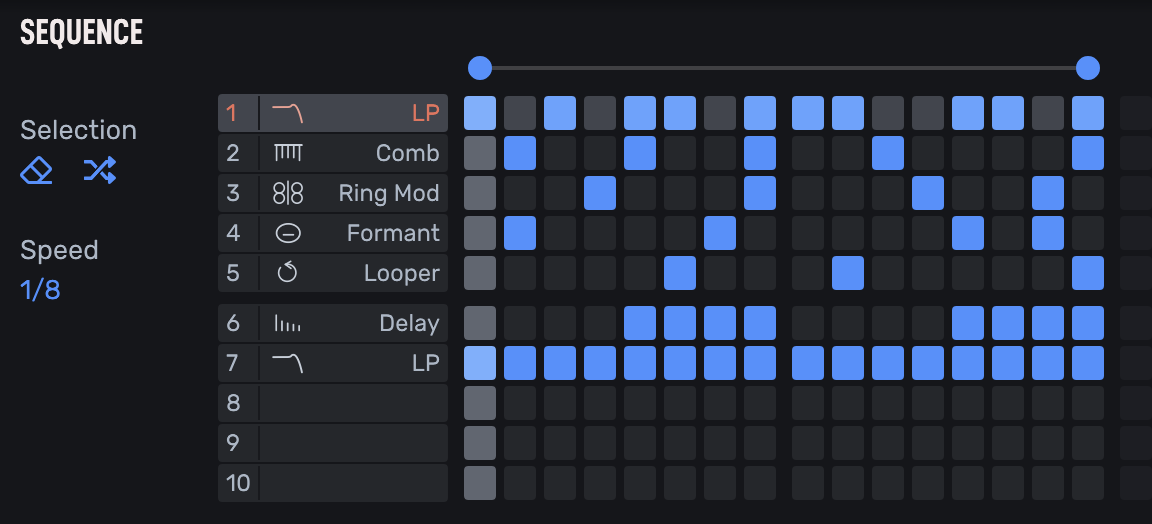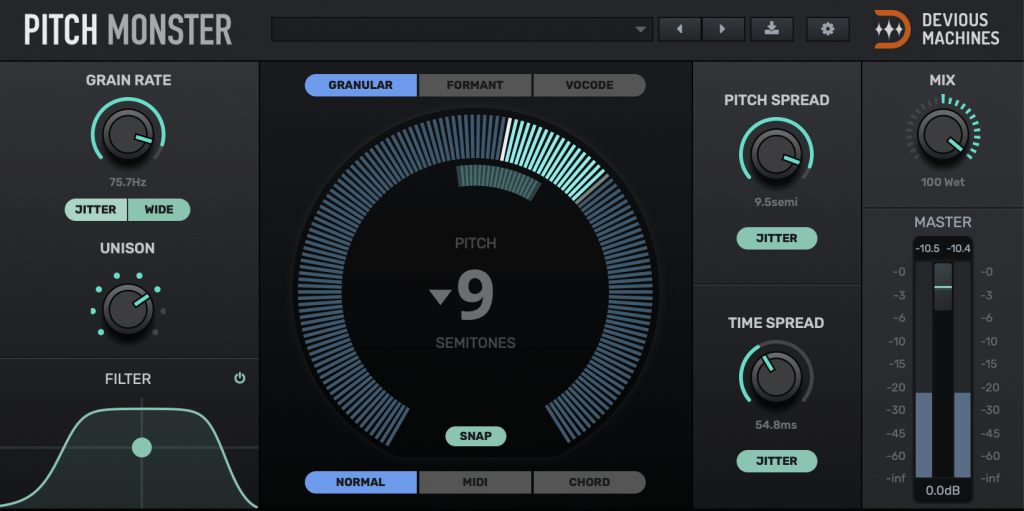
BLUE AMAZON REVIEWS – DEVIOUS MACHINES – PLUG-IN RANGE (P1)
October 13, 2021DEVIOUS MACHINES – are creating and breaking new waves with their unique plug-in range.
There is already an abundance of software plugin-in developers out there, often a confusing number of products and apps to choose from, so why look towards – Devious Machines?
As a creative audio enthusiast, I gravitate towards groundbreaking. I feel software can be very much like the music the software helps us create. Often the known or safe brand isn’t always where the gold is found.
DEVIOUS MACHINES – are a relatively new company to the software plug-in world with a modest but professional set-up. They’re a UK-based developer who is very forward-thinking and pushing the creative envelope in audio plug-in technology. They offer a range of plug-ins that are unique in design, providing solutions for essential audio processing through to complex sound design. The visual approach to their apps encompasses a nicely presented hybrid of Pro – audio architecture and friendly user interfacing. They are fun to use, powerful, and packed with hyper-tech quality to meet any demand – an intriguing and captivating approach to the audio world.
Their recent YouTube videos were very intriguing, and I was excited to get my hands on the plug-ins for testing/review.
My first point of call on the virtual testing deck is their latest plug-in called INFILTRATOR.
INFILTRATOR – is a wow factor plug that can transform any sound radically into something different and make it it’s own.
Main View

The Plug-in – is based on combining a chain of FX, filters, or modifiers (up to 10) that can be programmed independently. Each FX, filter, or modifier has separate editable functions and can be time-positioned by drawing an ADSR style curve or shape to a grid. The curves are user drawn between access points on a grid, freeform, or selected from several presets. Much like an LFO tool, you can change the timing and envelop of an effect. The curves are very smooth in transition from one point to the next and expansive.
Included FX – Filters – Modifiers

Each applied FX, filter/modifier has a huge amount of parameter control – including different quantize values (straight & swing) – easy access smart controls for each are displayed in the middle section / main view of the plug-in when selected. There’s a mix level between each, stereo width, gain and glide control. The different chains can also be controlled by an external audio trigger or via midi. Users can create macros dials to combine their favourite multi parameters.
If that wasn’t enough, INFILTRATOR also as a built-in step sequencer that allows you to apply the selected FX/modifiers in sequence – singly or multi-stacked whilst quantized to a beat value.

Step Sequencer

The master section (shown in the first image) is also populated with additional features and versatility. This includes a master envelope section – compression module – saturation and clean bass module (high pass style filter). Each of the global master modules has further preset options, model types and can be adjusted to taste. There’s also standard output with a mix (wet/dry) amount dial.
So how does it sound? What can we achieve with it?
Sonically it sounds clean and in contrast to some plug-ins – it doesn’t add any artifacts to the audio signal before applying any desired processing. On first loading the plug-in, I auditioned several presets to get a feel for INFLATRTOR capabilities.
Infiltrator ships with 750 presets, covering a wide range of different genres and sounds. Every preset has its macro controls carefully assigned for expressive control”
My first impression – was excitement. I instantly gained a picture of the depth and power of this unique transformation tool. The capabilities for sound-shaping are endless and cover a vast spectrum of applications. You can create mind-blowing transformations to more subtle ones. Infiltrator can be used as an automation tool by applying spot FX to an instrument section without having to go outside of the plug-in.
It’s instantly fun to use and embedded with a lot of powerful features.
From a practical configuration/set-up point of view, achieving similar results to INFILTRATOR within our very convenient digital daws systems – would encompass a lengthy amount of set-up and trial/error. A stack of plug-ins, automation, and a convoluted set-up – Infiltrator can do it all in one.
Application – Infiltrator can be used to create glitch FXs – beat transformation, vocal transformation, LFO style wobble, part reassemble, phased synthesis, or a combination of all of the above. I found myself experimenting with Infiltrator on bass sounds, drum loops, vocals, strings, kick drums, and much more. It’s limitless, ultra-creative, and a lot of fun.
The quality of the built-in processors sounds good, I didn’t have any CPU issues or application glitches- it is very fluent in operation.
I have already had hours of fun using this plug-in and will continue to use it for my productions – I would highly recommend watching a few videos and at the very least grab a demo copy to test yourself. I’m sure you will soon fall in love with it.
Pricing – currently £69.99 or included in the – Devious Machines Everything 2 bundle – which is hyper reasonable at £175
Compatibility – OSX 10.7 or later; Windows 7 or later. VST 2, VST 3, AudioUnit, and Protools 64-bit AAX
Next – on the testing deck is – Devious Audio – Pitch Monster.
Pitching and vocal FX modules are in abundance these days, the majority claim to be accurate, fast real-time processing, and harmonically pleasing. Some offer auto pitch correction, formant, and additional creative FX add-ons. Pitch Monster is similar on face value but looks more streamlined with an easier-to-use interface.
I was keen to try this as I’m a fan of vocal pitching for creative purposes and also to use on other instruments. Pitch Monster – also includes a Vocoder which is very convenient to have within a pitch-based plug-in. Again, there are already a vast amount of software Vocoders available on the market. Some vocoders are included in your DAW audio FX libraries, that said, how well they sound and ease of use is questionable.
Pitch monster also includes unison options and chording for harmonizing – which is very useful.
Pitch Monster – main view

I inserted Pitch monster on a vocal channel whilst playing a few well-recorded vocal parts playing (both male & female). I auditioned several presets, this quickly gave me a feel and extent of the plug-in capabilities. I instantly loved the female-to-male preset, some of the more extreme chorus/delay style presets, and vocal doubling/unison. It sounds clean, transparent and from a starting point – this was an instant positive. Next, I wanted to work from a blank (default patch) and creating pitching from scratch.
So, how well does Pitch Monster handle standard vocal pitch/key shifting?
Firstly, when transposing a vocal by a few semitones plus or minus is smooth sounding but then becomes more grain ish the further pushed. This is to be expected by the nature of a pitching effect in standard mode. Whereas pitch adjustments also increase the tempo at the same time. Think of this like using a pitch slider on a turntable, the further the pitch fader is increased or decreased the tempo changes and also the pitch of the music.
Pitch Monster – has two options to help with this – firstly – a Grain rate whilst in granular mode to modify the graining after pitch shifts are applied. The second and more effective option is switching the plug-in into formant mode. Formant mode is instantly smoother with higher pitch shifts and can be further adjusted to taste or extreme effect. It works well, holds up against the competition, and is worlds apart from standard daw pitch shifting.
My next point of testing was using the Unison feature – I found the unison feature very effective and quite cool sounding. The unison dial allows you to add an extra number of voices to the signal. There is a Time Spread dial to add delays between the additional voicing and helps create a wider spread. You also have a pitch spread to set the tuning/note separation between the voices, and it can shift up to 12 semitones (1 octave). It’s very intuitive to configure, gives you an instantaneous pleasing effect, and again a powerful multi-layered vocal sound at ease.
Now let’s get into chord mode
The chord mode allows you to specify a chord shape to be applied to the vocal or input audio signal. It then forces the audio to the chord/notes based on a specified route note. It has eight switchable banks to store each chord shape. The chord banks/shapes are easy to set up by simply clicking the note of choice on the piano keys to add (or remove) notes. It saves the chord to the selected bank. Additionally, there is also a load button above the piano keys. This has further preset options for key scales & chords for each musical key.
I initially tried this outside of vocoder mode and found it quick to set up. You can simply apply a chord shape to each bank and switch between the banks for variations. Inputting midi notes/chords is also an option, although using the banks is a quick and fluent way to get into action without additional routing. The eight chord memory banks can also be switchable via a midi/controller (pads – example) and controlled via daw automation – this is fantastic. You also retain control of format shift, unison, time spread, and pitch spread in this mode. This makes Pitch Monster further powerful.
Vocoder Mode
I’m a massive fan of vocoders and was very keen to try this out. The operation is pretty much identical to using chord mode in granular or formant as previously described. I tested the vocoder mode similarly with a few vocal takes, applied chords, single octave notes, and experimented with format, unison, pitch spread + time spread at the same time. I got some great sounding and powerful results. The sound of the vocoder is clean sounding, detailed, and with a nice sonic twist. It’s maybe not as authentic as an 80’s vocoder but still works very well and performs nicely on vocal layers.
How does it handle other instruments other than vocals?
This might be a little bit outside of the intention of this plug-in but why not give it a go?
I tried several different instruments through Pitch Monster including Drum loops – Guitars – strings and basslines. It seemed to favour instruments/parts with less note information – like slower sequences and fewer chords. Lead melodies worked well, and I created some interesting results from strings parts. Basslines running through this plug-in was very interesting and sounded great using the various modes/presets. Drum loops I found I had to be careful not to overload and clip the input (pre-fader input). It wasn’t as effective on drum loops as the other instruments, but I did manage to transform some full loops into interesting – hi-hat/top loop type sounds.
Other features include a global filter section which can be adjusted to High pass, Low pass and bandpass type filtering, wet/dry mix dial on the master section. There are also additional options for adjustments on each of the Format, Timeshift and Pitch spread dials.
Overall – it’s a purposeful, creative, and powerful plug-in that will help you break creative boundaries, speed up configurations, workflow and it’s fun to use. It’s not to be confused with an auto-tune plug-in as – Pitch Monster is providing a variation to the source input pitch. It has a great amount of scope and is sonically sound.
It’s certainly worlds apart from standard pitching daw options and many other pitch plug-ins. I prefer it to many of the higher-priced options and will continue to use it. Check out a few videos – Try a demo for yourself.
Pricing – currently £79.99 or included in the – Devious Machines Everything 2 bundle – £175
Compatibility – OSX 10.7 or later; Windows 7 or later. VST 2, VST 3, AudioUnit, and Protools 64-bit AAX
Part 2 to follow – including – Devious Machines – Boost – Duck and Texture
(Writer – Blue Amazon requires little introduction whilst mustering many accolades in music production that dates back to the early ’90s to the present day. Blue Amazon releases have included the Interpretations albums series with Zak Gee, singles on Jackpot records, Sony entertainment, Radiate, A Rec, Pro B Tech, etc. Remixes for – Lonya’s – Asymmetric label, Sasha, Skunk Anansie, New Order, Placebo through to artists as Madonna. The progressive club classic – No Other Love, The Javelin album, Underground club collaborations with Alex Flatner and Robert Owens on Kling Klong Records, tracks with Disscut from Germany, Louie Le Fink, and more)
Editor – Mike Mannix
DEVIOUS MACHINES: https://deviousmachines.com/
Facebook: https://www.facebook.com/DeviousMachines
Blue Amazon production: www.facebook.com/blueamazonproduction
Blue Amazon production Patreon: www.patreon.com/BlueAmazonProduction
Blue Amazon artist: www.facebook.com/blueamzon


